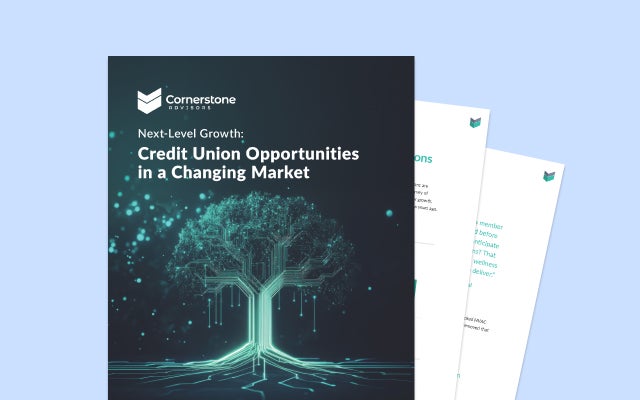April 6, 2023 in Thought leadership
Keeping our finger on the pulse: The results of our 2023 consumer banking market survey
Read on to find out more about consumer attitudes, behavior, and expectations when it comes to managing their money.

During the COVID-19 pandemic, many an epitaph was written for the physical bank branch — a seemingly natural, if accelerated, culmination of a decades-long transition to digital banking. But how true is that? Believing in the value of asking Americans directly about their current attitudes and behaviors towards banks, we conducted a consumer banking survey earlier this year.
To start with, reports of the demise of physical brick-and-mortar banks have been greatly exaggerated. Despite the rise of online-only fintechs and neobanks, customers still value physical locations:¹
- 82% of U.S. banking customers have physically set foot in a bank branch in the past 12 months
¹ In February 2023 Blend commissioned an independent research firm to survey 1000 current U.S. banking customers about their behaviors, attitudes and expectations when it comes to managing their money. The margin of error for this study is +/-3.9% at the 95% confidence level.
The top reasons U.S. banking customers would switch banks:
- Inconvenient locations
- Poor online banking experience
- Slow/poor customer service
- No ATM access
- Low interest rates
That said, despite only 42% of banking customers being highly satisfied with their current primary bank, 72% of our respondents expect they’ll be with the same one in five years. And the primary reason is that people don’t want to go through the hassle of changing banks:
- On average, U.S. banking customers have been with their current bank for 9 years
- U.S. banking customers think it would take about 14 hours of time to switch their checking account to another bank
- 24% of respondents would rather give a one-hour speech to 100 strangers on a topic they know nothing about than have to switch their checking account to another bank
Deposit accounts still reign supreme when it comes to where people are most comfortable keeping their money, but there are some surprises among the top three selected choices when broken down by generational cohort.
Where boomers feel most comfortable keeping their money:
- Checking accounts (69%)
- Savings accounts (64%)
- CDs (36%)
Where Gen X’ers feel most comfortable keeping their money:
- Checking accounts (76%)
- Savings accounts (66%)
- Money market accounts (23%)
Where Gen Z’ers feel most comfortable keeping their money:
- Checking accounts (72%)
- Savings accounts (69%)
- Cryptocurrencies (17%)
Where millennials feel most comfortable keeping their money:
- Savings accounts (74%)
- Checking accounts (73%)
- Cryptocurrencies (17%)
While clocking in at a distant third, we were nevertheless surprised to see cryptocurrencies anywhere on this list, given recent high-profile implosions of crypto market participants (for the record, it placed higher than equities, CDs, and money market accounts).
Perhaps, to some degree, it reflects a certain fear of the erosion of monetary value in overly conservative instruments; inflation is certainly on consumers’ minds right now:
- 51% say that inflation is discouraging them from saving money
- 43% say that during inflation, a bank is a bad place to keep their money
In fact, deposit-account interest rates are such an afterthought for consumers that a full 63% of them aren’t completely certain of the interest rate they are earning on their bank savings.
Let’s look at another interesting generational difference we found:
- 15% of boomers highly trust that banks have their best interests in mind
- 18% of Gen X’ers highly trust that banks have their best interests in mind
- 26% of millennials highly trust that banks have their best interests in mind
- 26% of Gen Z’ers highly trust that banks have their best interests in mind
That’s right, younger generations have a higher degree of trust that banks have their best interests in mind. Is that because we’ve gotten better over time? Or do younger people just have less scar tissue? We’re not sure. But it definitely contradicts the perception that younger generations are more jaundiced towards banks than older generations.
The upshot, it seems, is that while technology has altered many aspects of the financial services experience, there’s still an opportunity to gain lifelong customers by doing the traditional stuff well.

Want to learn more about how Blend can help banks leverage technology to drive lifelong customer value?
Find out what we're up to!
Subscribe to get Blend news, customer stories, events, and industry insights.


